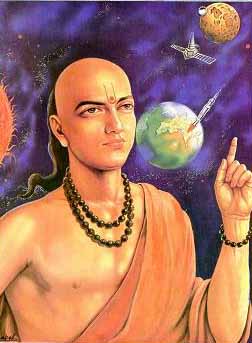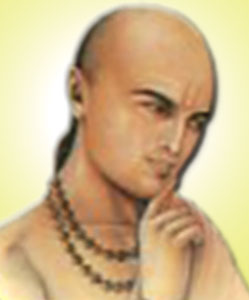 The contribution of India in the field of astronomy right from the early days has been of great fame. The earliest mention of astronomy in India has been found in the Rig Veda. With passing time Indian astronomy emerged as an independent field of study. Indian astronomy as a separate branch of study had made noteworthy contributions to explain several matters.
The contribution of India in the field of astronomy right from the early days has been of great fame. The earliest mention of astronomy in India has been found in the Rig Veda. With passing time Indian astronomy emerged as an independent field of study. Indian astronomy as a separate branch of study had made noteworthy contributions to explain several matters.
Ancient Indian astronomy was closely associated with culture and religion. In the Vedas for the first time in India there was textual mention of Astronomy. Astronomy in the early age was also interwoven with astrology. It can well be said that in the ancient age Indian astronomy was well advanced. It was so advanced that early Indian astronomers had made out that the sun and the stars were similar in nature. They had also found out that the sun is the centre of the universe. Even in terms of measurements the Ancient Indian Astronomers were very close to actual figures. It was determined by Brahmagupta who had determined that the circumference of the earth was 5000 yojnas each yojna being 7.2 kilometres.
According to a general belief the early astronomers of India were essentially priests. They believed the sky to be the divine. This was so because the initial connection of Indian Astronomy was with astrology in India.
The earliest text of early Indian Astronomy was Vedanga Jyotisha. The book dates back to 1200 AD. It was written by Lagadha. The book vividly describes the rule for tracking the motions of the moon and the sun. It has also given the description of some geometric as well as trigonometric rules which was later used in many of the astronomic studies.
During the early days Mathematics along with Astronomy were used to calculate the time after sunlight, the daylight periods. Computation of sunrise and sunset and the general calculation of time were also done with the help of Mathematics and Astronomy.
There has also been mention of astronomical treatise in the Indian Sulbasutras and the Shatapatha Brahmana. Several astronomical references have been found in the Vedas and they serve as important chronological reference. In some of the third millennium cities of India fire altars for astronomical basis have been found but some of the evidences refer to the fact that their contents date almost to the first millennium.
Some of the major contributions of ancient Indian astronomy were the calculation of the occurrences of eclipses, determination of the earth`s circumference, formulating a theory of the gravitational force of the earth and establishing the fact that the sun was a star and it also found out a number of other planets in the solar system.
The prominent Astronomers belonging to ancient India were Aryabhata I, Bhaskara, Nilkantha and Madhava. They had made noteworthy contributions in the field of astronomy. In fact it can be said that contemporary astronomy has developed in India taking cue from the early theories of Indian astronomy.
 In the ancient India the study of Astronomy was known by the name Khagola-shastra. The name was derived from the famous astronomical observatory in Nalanda with the name of Khagola. It was at Khagola that Aryabhata had studied and had extended the subject of astronomy to a wide extent.
In the ancient India the study of Astronomy was known by the name Khagola-shastra. The name was derived from the famous astronomical observatory in Nalanda with the name of Khagola. It was at Khagola that Aryabhata had studied and had extended the subject of astronomy to a wide extent.
Aryabhata as a famous astronomer had a lot of contributions in the field of astronomy. It was he who had found out that Earth rotated around its own axis and also considered the motions of other planets. Aryabhata also found out as to how the eclipses of the sun and the moon take place. Brahmagupta an astronomer of the early days had used algebra for the first time to solve all sorts of astronomical problems.
Many Indian astronomers had also discussed about the concept of heliocentrism. Both Aryabhata and Bhaskaracharaya had mentioned in their treatises about the concept of heliocentrism. In fact the idea of heliocentrism existed in India from the times of Rig Veda and was later developed by the astronomers of India.
The proper development of ancient Indian Astronomy was hindered due to the presence of a telescope. But still even without proper instruments Ancient Indian Astronomers had made a lot of progress in the field of Astronomy. Right in the ancient days it was discovered by the astronomers that the earth was a sphere.
Hindu astronomy was part of ancient Indian astronomy. Hindu Astronomy mostly includes calendars and calculation of the planetary positions. Some of the notable Hindu astronomers of the early age were Varahamihira and Garga. Hence it can be concluded that ancient Indian astronomy was a pioneering effort in the field of astronomy. Ancient Indian astronomy was developed to a large extent and it served as a cue for the astronomers in the following time periods.















